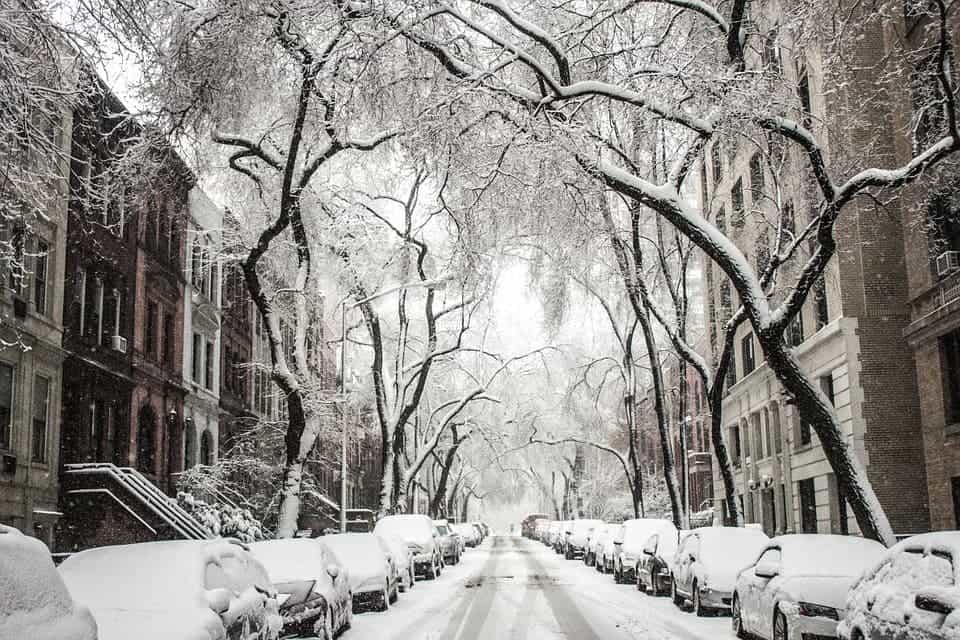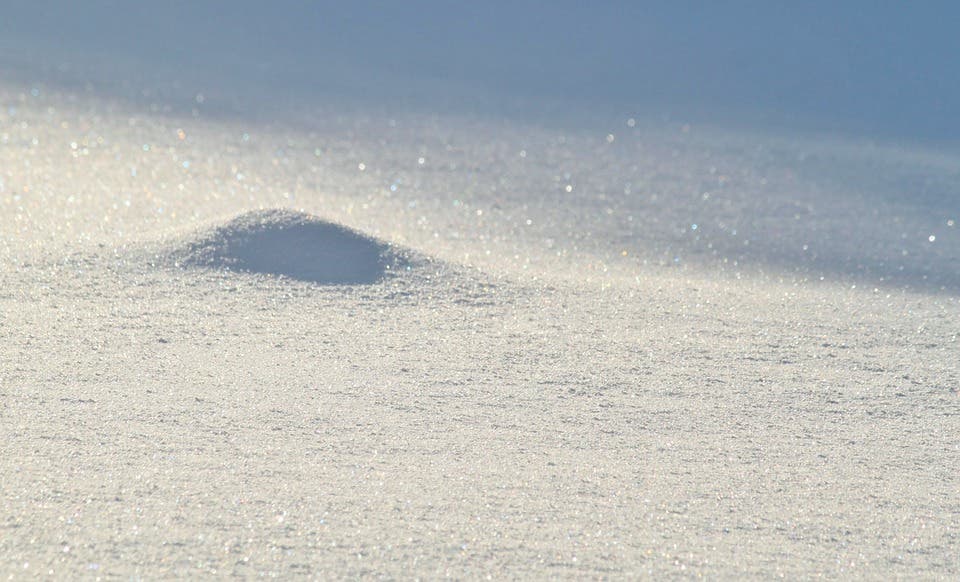Every time it snows, the world turns white, even for the briefest of moments. Today we’re taking a look at why that is.

You likely hear the song “White Christmas” played every time the winter holidays swing around. It goes to show just how deep cultural associations between snow and its color — that striking, pure, sparkling white — run. If you think about it, however, something doesn’t add up. Snow is basically made up of tiny crystals of water (ice) caked one on top of the other. Water isn’t white; nor is ice, for that matter.
Logic dictates that there must be another element coming into the mix to make snow, well, snow-white. There is. To whet your appetite, it’s basically the same process that makes polar bears appear white. So let’s see what it is.
Color me surprised
To get a clearer picture of why snow appears white, we need to take a look at what generates color in the first place.
Our eyes are basically sensors designed to pick up on a particular spectrum of electromagnetic radiation — which, surprise, surprise, we call the ‘visible light’ spectrum. We perceive different wavelengths or intervals of this spectrum as different colors: ‘wider’ waves look red to us, while ‘narrower’ waves appear to be blue.
Light is pretty much like any other type of radiation. When it hits an object, it can pass through, interact with it, or be reflected completely. Objects take on different colors because their individual building blocks (atoms or molecules) vibrate in response to different frequencies of energy (such as that carried by light). They absorb a particular band of energy to sustain this vibration — which transforms it to heat. The light frequencies which don’t get absorbed can keep going through this material (which makes it transparent or translucent) or get reflected (making the material opaque).
What you see as ‘color’ is the blend of all energy intervals or bands from the visible spectrum that a material doesn’t absorb. Think of white light as a sum of all the colors canceling each other out. To get a particular shade, then, you need to do one of two things. You can subtract its opposite, which we call its ‘complementary’ (here’s a handy color wheel), from the mix, leaving that particular color ‘uncanceled’. Alternatively, you can absorb all other wavelengths and reflect only the color you want.
As an example, leaves appear to be a fresh green because chlorophyll absorbs the wavelengths corresponding to red and blue. Their complementary colors are green and orange/yellow. Leaves absorb only a fraction of the green wavelengths, and what’s reflected creates their color. It’s particularly interesting to note that sunlight is heavy in the green-wavelengths of light. Plants want red and blue light because they’re the less energetic parts of solar radiation. Going for the green spectrum would actually radiation-fry the leaves’ biochemical gears.
Don’t judge a snow by its color
If you put a chunk of ice next to a handful of snow, it’s pretty easy to tell that their colors do not match. One looks basically like solid water while the other is all glimmery, white, and definitely not transparent. So what gives?
Well, first off, caution to the wise: ice isn’t transparent — it’s translucent. Some of the atoms in the ice molecule are close enough to alter lightwaves as they come into contact. Think of it like the light having to squeeze between these atoms as it passes through ice. It doesn’t bother the light very much, but it does ‘bend’ its trajectory a little. Put your finger in a glass of water, and the submerged part will look skewed compared to the rest of your hand; it’s the same process at work.
Shape and size also make an appearance here. Snow is made up of many tiny ice crystals stacked together. When light encounters snow, it goes through the first layer of crystals and gets bent a little. From here, it passes to a new crystal, and the process repeats. Kind of like a disco ball, the snow keeps refracting light until it’s bent right out the pile. Since ice is translucent (doesn’t absorb any wavelength of light), the color of this light isn’t altered, so it’s still white when it exits the pile of snow to hit your retina.

Image via Pixabay.
The small size of ice crystals in snow also gives it that ‘matte but glittery’ look. Smooth objects reflect light specularly, or like a mirror. Rough surfaces scatter the light they reflect instead, which is why we can perceive texture from looking at an object. The crystals in snow are smooth, so each reflects light specularly. From the right angles, you can see this as tiny, bright reflections on the ice. When clumped up together, however, the crystals scatter light overall. Because the way light falls on it helps create the color, snow can take shades of blue, purple, or even pink in certain circumstances — when it’s in shadow, for example.
As for the polar bears, they’re not really white. Their fur is actually pretty dark in color. Polar bears’ coats are made of two layers of hairs, one short and thick, the other a bit longer and more sparse. This second, longer coat is made up of transparent hairs with hollow interiors. Much like in the case of snow, light falling on these hairs scatters (thanks to light-scattering particles inside the hollow cores) and is reflected back out, giving the bears a white appearance. Salt particles in between the hairs left over from ocean water evaporating after a swim further enhance this effect.






